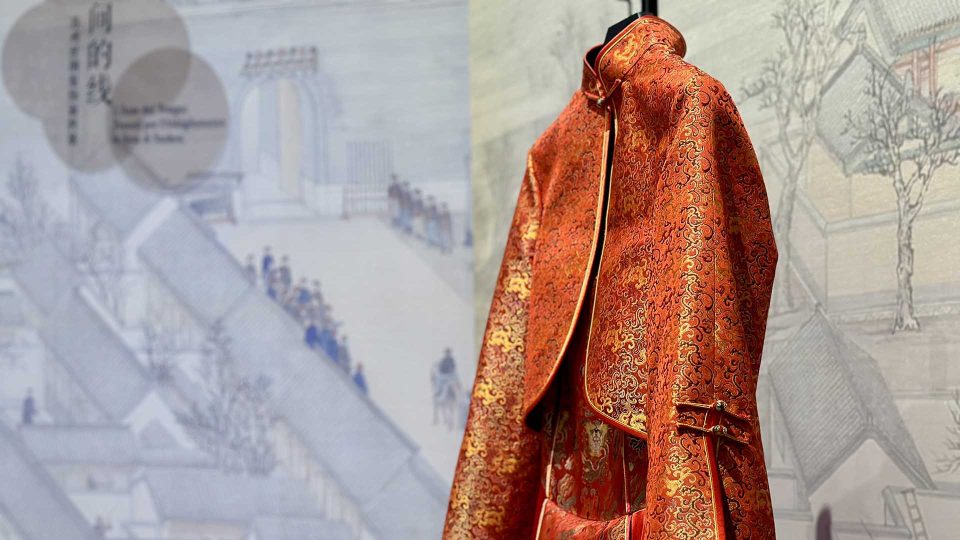
At Palazzo Mocenigo, the exhibition L’asse del tempo (lit. The Axis of Time) officially opens the celebrations for the 700th anniversary of the death of Marco Polo, testifying to the historic connection between the water cities of Venice and Suzhou, the two ends of the Silk Road, officially twinned since 1980. It was Marco Polo himself during his long journey in the East as an envoy of Kublai Khan who was enchanted by Suzhou, which is described in Il Milione as ‘a very noble city […] where many silk fabrics are made, and there are rich merchants.’ Silk is the protagonist of the exhibition in the Portego of Palazzo Mocenigo: about twenty garments, original creations, fabrics, and faithful replicas of ancient garments from the Silk Museum of Suzhou, a center for research, conservation, and protection of the ancient weaving technique that made the silk of the Jiangnan region famous. Creations such as Song Dynasty brocade, lampas, Kesi, silk tapestries, or the typical Suzhou embroidery known as pattern velvet, examples of China’s intangible cultural heritage, evoke astonishment and wonder due to their refinement and preciousness. The dialogue with the spaces of the Museum, the Center for the Study of the History of Fabric, Costume, and Perfume, which houses the textile and ancient clothing collections of the Civic Museums, is also an opportunity to compare from an aesthetic and manufacturing point of view the style of clothing during the Serenissima Republic with that of the main ruling dynasties in the ancient Chinese empire. The exhibition is curated by Qian Zhaoyue, Director of the Suzhou Silk Museum, Liu Xu Dong, Consultant to the Suzhou Silk Museum, Chiara Squarcina, Head of the Palazzo Mocenigo Museum, Massimo Andreoli, President of Wavents srl, and Laura Fincato, Honorary Citizen of Suzhou.